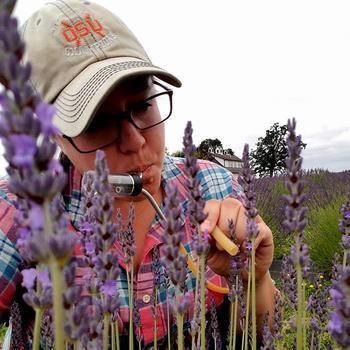Using this guide
This guide is designed to help you quickly learn and identify the most common natural enemies found in nursery systems.
Each card provides the name of a natural enemy or a group of natural enemies, as well as identification information, target pests and monitoring suggestions. Use this field guide to supplement other publications that can provide more complete information.
Images are from the Ken Gray collection unless otherwise noted. Used by permission.
Using natural enemies for biological control
Find out which natural enemies already exist, and monitor their numbers to determine the ratio of natural enemies to pests.
These tactics can enhance biological control as a part of an integrated pest management plan:
- Provide supplementary habitat and food sources for natural enemies, especially for the growth stages in which the organisms do not feed on pest insects.
- Manipulate the behaviors of natural enemies with attractants, or by structuring and arranging plants.
- Boost numbers by releasing commercially available or lab-reared natural enemies, when available.
- Introduce natural enemies that are absent in the system, but present in the natural areas nearby.
- Use complementary pest management techniques to protect natural enemies from disturbance. These could include applying pesticides to fight predators and discouraging ants, among other management practices.
General observation tips
When doing visual counts:
- Inspect the underside of leaves. Predators stay in areas where food is available and lay their eggs near pest insect food resources.
- Approach fast-moving insects slowly. Predators have to be fast and usually have good eyesight, and can be frightened off by large movements nearby.
- Use nets, beat sheets and trays or traps to get a closer look. It’s a good idea to keep a few vials or containers with you in the field to capture and hold insects of interest for close examination.
- Avoid using traps that capture and kill. If natural enemies are present, killing traps may damage their populations in the nursery.
- Make observations about behavior. The best way to identify natural enemies is to observe them feeding on prey. Observe the insects interacting in the nursery. Or, collect and place pests and suspected predators together in an enclosed environment to see if the pest is attacked.
Common natural enemies
Identifying parasitized pests
Parasitized insects can be difficult to identify. The best method is to collect insects that look or behave unusually and keep them in a container until the parasitoid emerges.
Identifying diseased pests
Insects are susceptible to viruses and bacteria, and some of these weapons have been harnessed for use in agriculture production systems. Individuals with infections are often dark in comparison to healthy individuals.
Insects can also be attacked by fungus present in soils naturally, as well as certain types of fungus that are commercially available to control pest populations. Insects infected with fungal pathogens often appear fuzzy as the reproductive stages of the fungus emerge from the insect skin.
This publication may be photocopied or reprinted in its entirety for noncommercial use.
This revision was supported by Advancement of Pesticide Spray Applications in Specialty Crop Production with Intelligent-decision Technologies” (USDA NIFA SCRI Grant No. 2015-51181-24253)



